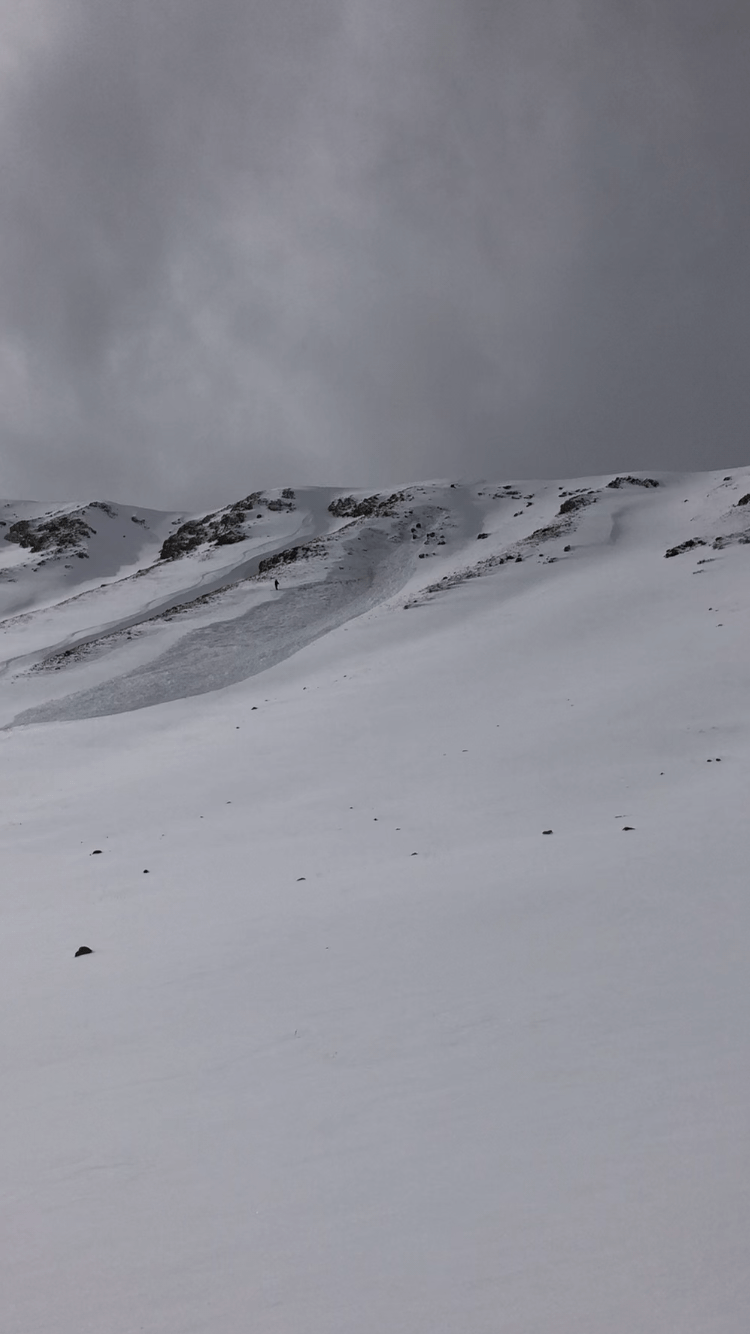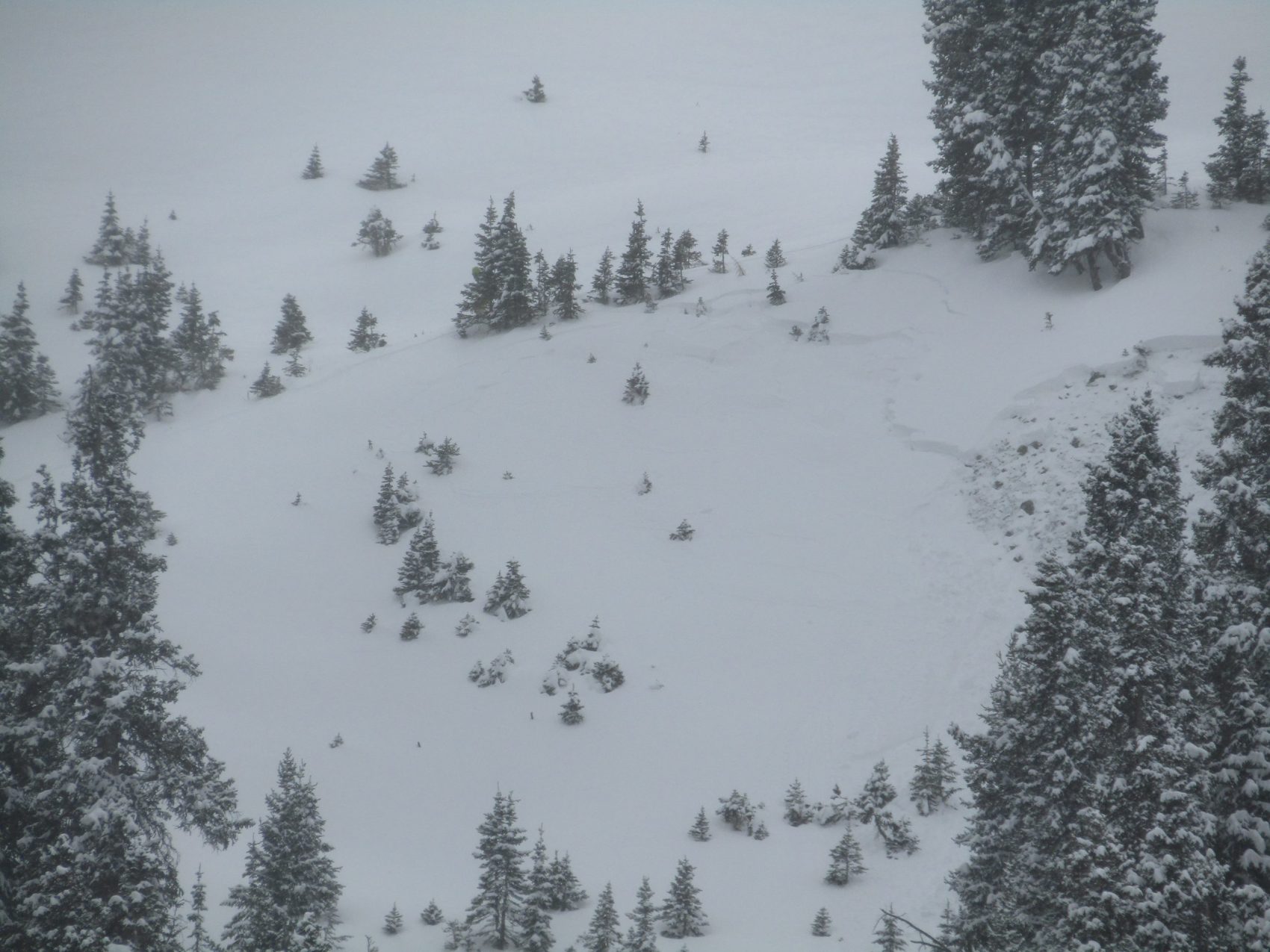
The Colorado Avalanche Information Center (CAIC) has had several reports of skier triggered avalanches the past couple of days.
The video above is of a skier triggered avalanche in Mountain Boy Basin near Independence Pass on Nov. 9. The skier was caught and carried but was able to ski out and back onto the ridge. Details from the report below:
Snowpack: Approx. 18”-24” of dense wind drifted snow on easterly facing slopes. Beneath wind slab was a 2”-4” layer of mostly frozen, highly faceted snow from previous storm in October.
Avalanche Description: Skier 1 entered the slope from the lookers right and performed a ski cut which did not produce any signs of instability. A second rider proceeded to ski the adjacent slope (tracks on lookers left) and rode top to bottom with no hazards. Skier 1 then proceeded down the ridge, making several turns before triggering an avalanche near the convexity in the slope. Skier was caught momentarily but was able to ski out and back onto the ridge. No one was injured.

A second skier triggered slide, also near Independence Pass, occurred the same day. Details from the report below:
We did not observe any significant cracking or collapsing on our tour. See the avalanche observations section and images for an avalanche that was triggered today. In areas protected from the wind the snow depth is about 30 to 40 cm. Wind loaded areas are double that. We dug on an east aspect near treeline and found 36 cm of snow with indistinct weaknesses in the storm snow but no basal facets. On a north-facing wind-loaded slope we found a snow depth of 75 cm with an 8 cm thick 1-2 mm layer of faceted crystals at the ground. An extended column test produced a propagating result on this basal layer.—We didn’t get on any steep northerly slopes but I would suspect that the layer of facets is thicker on shadier, steeper slopes, especially gully features.—From what we found so far, the basal facets are on northwest, north, and northeast slopes at most elevations.

Even a small avalanche could cause serious injury as you get dragged through rocks, timber, or other obstacles.